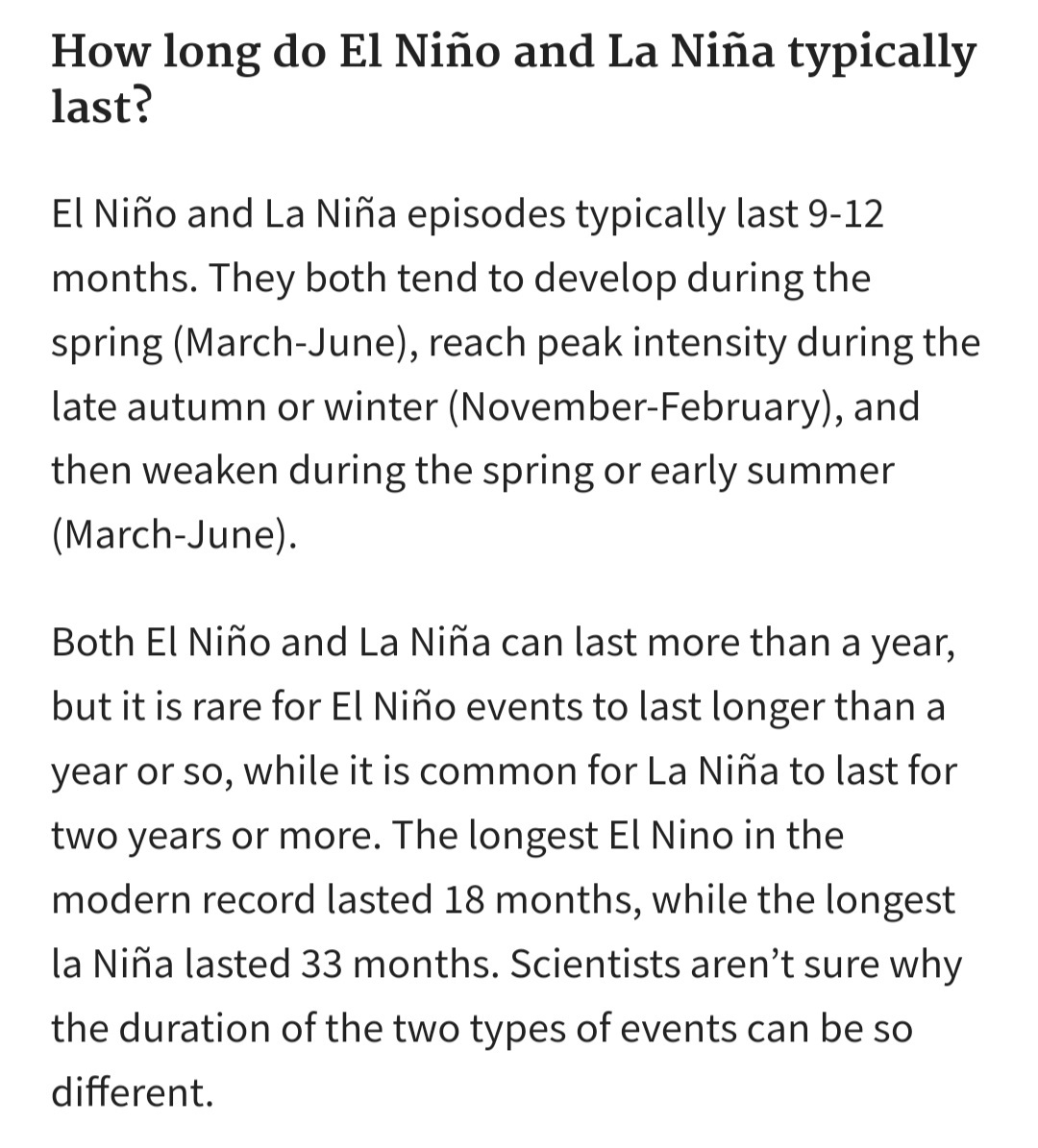Parts of eastern Japan are expected to reach 38 to 39 degrees Celsius, with the Meteorological Agency warning temperatures could hit previous records.
Parts of eastern Japan are expected to reach 38 to 39 degrees Celsius, with the Meteorological Agency warning temperatures could hit previous records.
I’ve been thrown off by “An El Nino cycle is typically 2-7 years long.” But the Wikipedia page really says this.
However, I believe this is meant as the time between El Niño years, not how long a single El Niño pattern sticks.
Looking at history records (NOAA) makes me think so.
If anyone can clarify, please feel free to educate me.
You’re right. The ENSO (El Niño Southern Oscillation) cycle can take up to 7 years, but that’s the entire cycle (El Niño, La Niña, and neutral). El Niño conditions may only last months. La Niña typically lasts longer.
This year, they expect El Niño conditions to continue at least til the end of the year.
Also, this past La Niña was unusually long, about three years long. I’m not sure what that signifies but it seems like it might be important.
From climate.gov:

edit: formatting